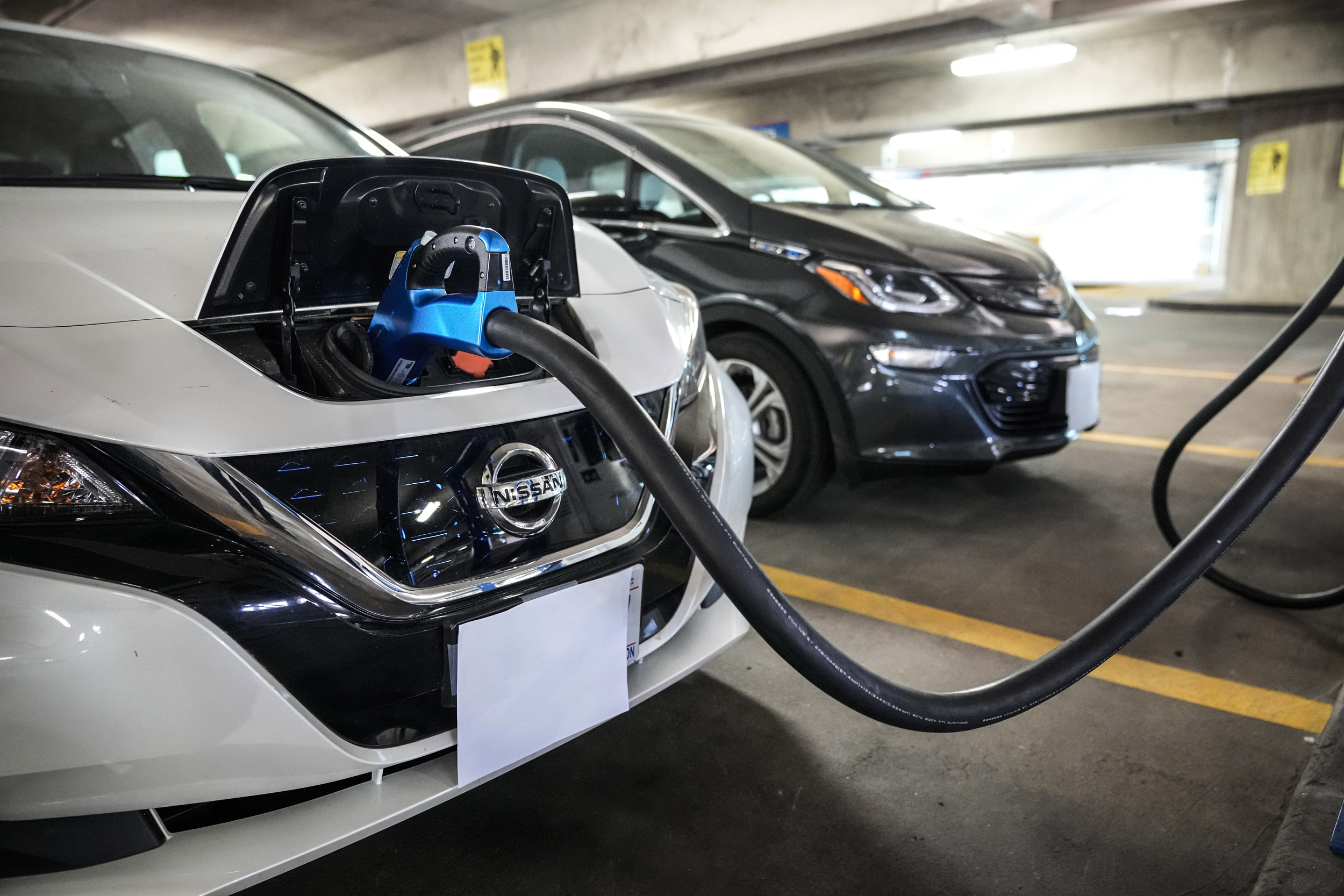By Nancy Thorner, Opinion Contributor
One of the most hyped innovations of today is the mass production of electric vehicles, with government officials never considering their own complicity in policies that make matters worse.
It’s an irrational choice championed by environmentalists and an expensive mistake being made by many governments and local officials who are squandering tax dollars on the delusions of a few.
EV goals of President Biden and CA Governor Newson
President Biden has outlined a goal that 50% of cars sold in 2030 will be zero-emission electric vehicles in keeping with the Green New Deal.
The main goal of this pipe dream plan is to bring U.S. greenhouse gas emissions down to net zero and meet 100 percent of power demand in the country through clean, renewable, and zero-emission energy sources by 2030.
In September of 2020, California’s Gov. Newson issued a series of Executive Orders and actions to ramp up efforts to fight climate change, starting first with a massive venture to ensure all Californians have options beyond burning fossil fuels in cars, trucks, and buses.
The state’s new targets mean all new personal vehicles will be capable of charging on electricity, or running on hydrogen by 2035 — followed by all commercial trucks and off-road vehicles such as forklifts between 2035 to 2045, depending on the category.
While President Biden and the state of California believe that the internal combustion engine will soon end up in the dustbin of history, it just isn’t so.
A study from the Argonne National Laboratory in Chicago found that,
“the implementation of electric vehicles has had almost a negligible impact on the consumption of gasoline, amounting to about two days-worth of gasoline consumption reduction in the last 10 years.”
Automobile manufacturers investing in their output will likely be disappointed in their sales. Perhaps already knowing this, will manufactures just manufacture what they know they can sell?
This is definitely not what President Biden and Gov. Newson are planning for.
Electric car drawbacks
There are several reasons why electric cars will remain a niche market — at least until the following factors are resolved.
Cost factor
The most obvious is that high prices of electric vehicles will not allow the average American to own one any time soon. Gas powered cars are significantly cheaper and will also transport you much farther.
The 2022 Nissan Leaf starts under $28,000, but prices soar to well over $100,000 for an electric SUV, pickup or high-performance luxury car.
Charging stations
As for long drives, most electric powered vehicles cannot do long drives as they are limited by range and speed. Compared to the wide availability of gas stations, charging stations for electric vehicles are still few and far in between.
And compared to a couple of minutes it takes to fill a fuel tank, it takes about 4-6 hours to charge fully an electric car.
EV batteries
Rare earth minerals are necessary for car batteries. Two of the rare earth minerals needed are cobalt and lithium — and both minerals hurt the environment, and for mining, they leave massive holes and permanent scars which make the land unusable.
Other rare earth minerals important in clean energy applications and high-tech industries are neodymium and praseodymium.
The United States needs ten times the amount of rare earth metals it currently has to meet President Biden’s ambitious 2030 EV goals, according to one CEO in the business.
The U.S. likewise needs 20 to 25 times more to meet the burgeoning needs of the green economy — and the military — as we increase investment in wind power, electric vehicles, and even cell phones to the year 2050.
EV batteries last around 10 to 20 years. A new electric car battery replacement can cost anywhere between $4,000 and $20,000, depending on the type of electric car you drive and the labor rate
In cold weather, gas-powered cars outperform electric vehicles, whose driving range can plunge 20 to 50 percent because their batteries slow down as the temperature drops.
Although electric car batteries are recyclable, few recycling facilities can handle them. It is therefore up to EV owners to find a responsible recycling facility.
Car batteries contain toxins and other harmful metals, such as sulfuric acid and lead, which can be hazardous to the environment. They become a problem when people dump them in landfills. This often results in soil and water degradation.
China’s exploitation of children
China is exploiting children in the Democratic Republic of Congo, forcing them to them to work under hazardous conditions to mine the cobalt that powers electronic devices and electric cars.
China is dominant in the Republic of Congo and doesn’t care about human dignity, slavery, child labor, or the environment. Nor does China care about their own Chinese citizens, who are sent to the Congo to mine cobalt.
Electric car statistics
Consider the following:
-Over 2 million electric vehicles have been sold in the United States.
-Electric cars still make up just 1% of cars on our roads.
-46% of Americans remain unlikely to consider an electric car for their next vehicle.
A study at the beginning of 2022 revealed how most Americans felt about electric cars. Most have little interest in purchasing an electric vehicle — and nearly 70 percent of those surveyed are still interested in conventionally-powered gasoline powered cars.
Transitioning away for hydrocarbons
Despite the push for electric cars, the critical element will be the development of renewable energy technology that is inexpensive and reliable to accommodate an increased demand for electricity.
Such a transition could take at least a generation.
As observed in Offshore Magazine by Mark Mills, a senior fellow at the Manhattan Institute:
“Pundits and politicians are eager to assert that there is an inevitable and accelerating ‘energy transition’ away from hydrocarbons.
It’s true that there are record sales of electric cars and massive plans for solar and wind installations. But a rapid transition away from the existing energy infrastructures isn’t visible in the data.
During the past two decades, global governments have spent over $5 trillion to avoid using fossil fuels. But oil, natural gas, and coal still supply 84% of global energy, just two percentage points lower than 20 years ago. Meanwhile, burning wood supplies more global energy than solar power. Oil still fuels nearly 97% of global transportation. Crop-derived liquids supply most of the rest with batteries powering under 1%.”
Nevertheless, as Mills further writes,
“From Washington to Brussels, policy makers propose doubling down on an energy transition.”








